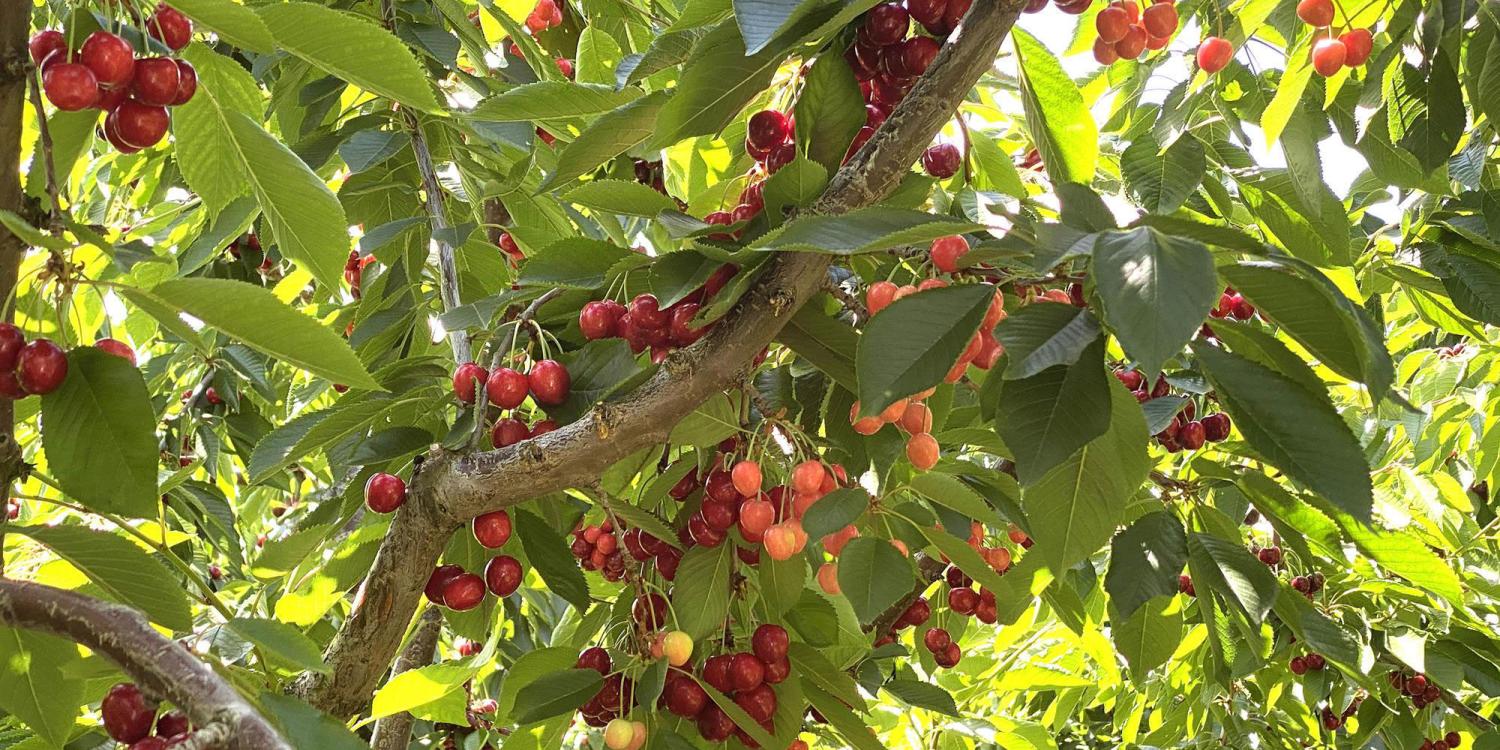
Cherry growers in the Columbia River Gorge dread the emergence of X-disease, which makes cherries small, flavorless and unmarketable. At least 239,856 cherry trees were removed between 2015-2023, costing growers an estimated $115 million in revenue.
The disease, also called little cherry disease, has plagued the western United States since the 1930s. It moves rapidly through an orchard and can cause significant crop loss within two years. There is no cure.
The only treatment is to remove infected trees, but orchardists are reluctant because of lost income. The disease spreads through root grafting or insects called vectors that transfer the disease from tree to tree. If the tree is not removed, the disease can spread quickly and decimate a whole growing region as demonstrated by the 1930s X-disease outbreak in California when cherry production almost disappeared from Napa, Sonoma and Solano counties and continues to threaten northern San Joaquin County, where most of California cherries are grown.
For five years, Ashley Thompson, Oregon State University Extension Service fruit crops specialist and assistant professor in the OSU College of Agricultural Sciences, has made it a priority to help farmers identify X-disease. Early in the project, Thompson worked with Jay Pscheidt, OSU Extension plant pathologist, and his graduate student Lauri Reinhold, to learn about the disease so she could teach growers. She gave presentations and hands-on workshops, and, in 2020, X-disease was the focus of Cherry Day in the Dalles. Her well-attended presentation – Vicious Viruses and Freaky Phytoplasmas – helped growers with identification.
Also in 2020, Thompson received funds from the Washington Tree Fruit Research Commission to focus on X-disease outreach. Since then, she has hosted in-depth meetings, developed the bilingual “X-disease Phytoplasma and Little Cherry Virus Scouting and Sampling Guide” with Washington State University and authored or co-authored the OSU Extension publications “Getting Ahead of X-disease,” “How to Spot Signs of X-disease in Cherries” and “Identifying Serious Virus and Phytoplasma Symptoms in Your Cherry Orchard.”
Additional funding from the Columbia Gorge Fruit Growers allowed Thompson to identify disease-infected trees in orchards and in the community using precise molecular testing. Four research orchards, each with 150 trees, were chosen for observation. Samples were collected from trees showing symptoms and neighboring trees that didn’t show symptoms to better understand the spread of the disease. The funds also gave her the ability to provide virus testing to cherry orchardists free of charge.
Most prevalent in the Gorge, X-disease also has a foothold in the Milton-Freewater area, where Cody Copp, OSU Extension commercial horticulture specialist and assistant professor of practice in the College of Agricultural Sciences, is also working with farmers to identify diseased trees and explaining the importance of removing them. In 2022, he worked with researchers from WSU to take tree and weed samples for genetic testing to see what pathogens were present.
The research showed the instances of X-disease in Milton-Freewater were caused by different genetic origins than those in the Columbia Gorge. Additional testing is being done in 2023 to help determine best management strategies for the unique version of X-disease. The hope is the isolated nature of Milton-Freewater cherry orchards and the different version of disease, along with increased vigilance and sanitary measures, may keep a more devastating outbreak out of Milton-Freewater’s orchards.
In the Gorge, a survey of 50 orchardists at the 2022 Cherry Day suggests that 86% of those cherry producers can confidently identify X-disease and 48% have removed at least one infected tree since Thompson started her outreach in 2018. The number is climbing, with the highest number taken out in 2022. Three new locations with X-disease were found and the free testing program saved the industry $10,000 in testing fees and was integral for removing trees in orchards where X-disease wasn’t previously present.
More than 1,500 bilingual X-disease identification cards, “How to Spot Signs of X-disease in Cherries,” produced by OSU Extension, have been distributed to local farmers and farm workers in Wasco County and 1,000 OSU-WSU bilingual information packets, including a scouting and sampling guide, identification brochures and tree tags, were distributed in Oregon.